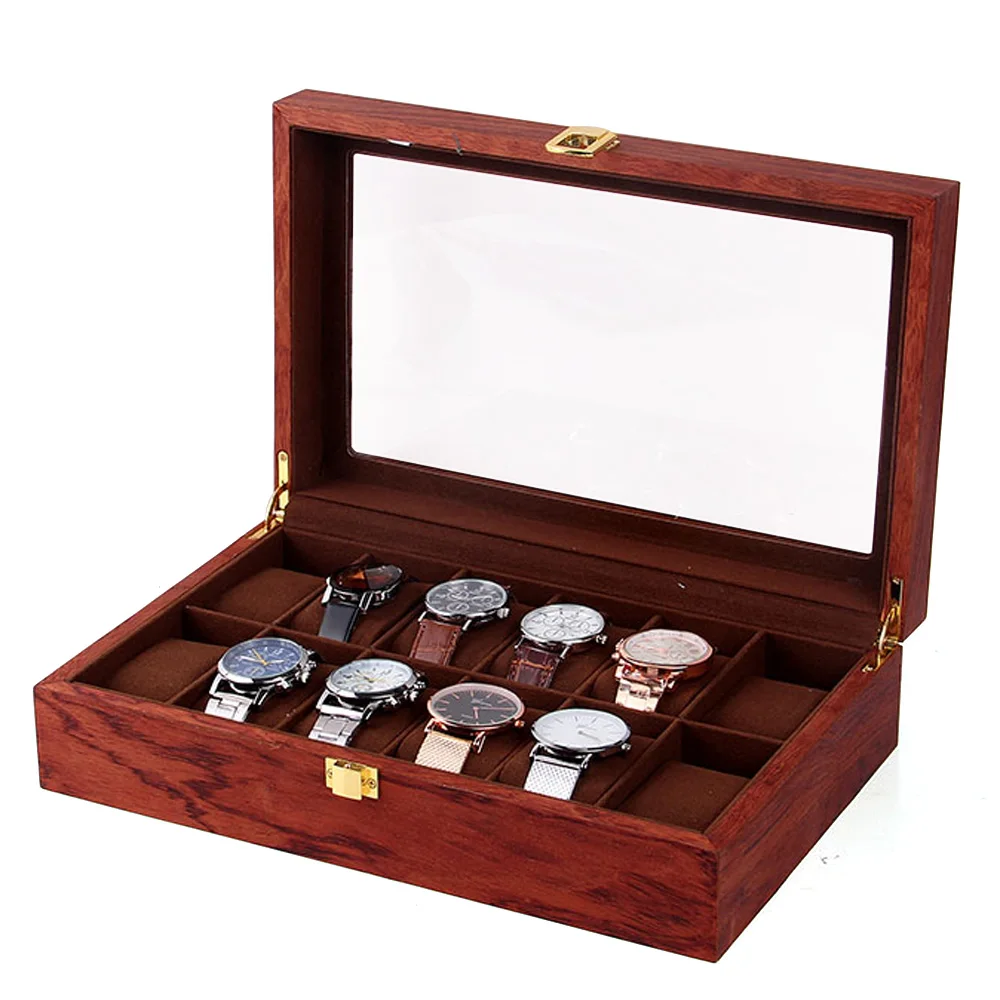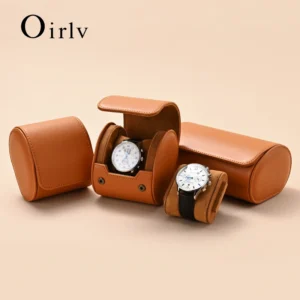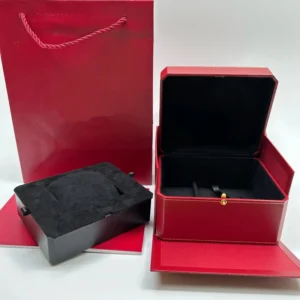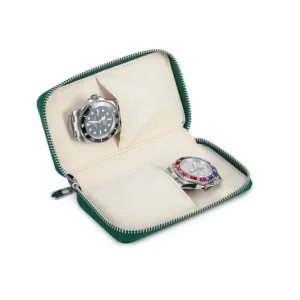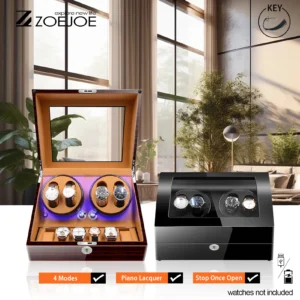Introduction: Why Proper Watch Storage Matters for Extended Periods
When a treasured timepiece spends months or years tucked away without regular wear, it enters what watch enthusiasts consider “long-term storage.” This idle period presents unique challenges that casual storage simply doesn’t address. Without proper care, premium watches can suffer damage that affects not only their performance but also their appearance and value.
The stakes are particularly high for mechanical watches with delicate moving parts that require protection from humidity, dust, and temperature fluctuations. Improper storage can lead to seized movements, corroded components, and tarnished cases—issues that often require costly repairs.
Beyond functional concerns, proper storage preserves the aesthetic qualities that make fine watches so appealing. Scratches, fading, and deterioration of straps or bracelets can significantly diminish a timepiece’s visual appeal and market value.
Many vintage watches that command impressive prices today survived decades because previous owners stored them properly. This preservation of both function and form is especially important when considering watches as family heirlooms meant to be passed down through generations.
Creating comprehensive watch collection storage planning is essential for anyone who values their timepieces as both functional accessories and investments worth protecting.
Environmental Factors: Creating the Ideal Storage Conditions
The environment where you store watches long-term dramatically impacts their condition. Creating optimal conditions means controlling several key factors:
Temperature:
* Ideal range: 65-75°F (18-24°C)
* Avoid temperature extremes that can damage lubricants
* Prevent rapid temperature fluctuations that can cause condensation
Humidity:
* Optimal range: 40-60% relative humidity
* Too high: promotes corrosion and mold growth on leather straps
* Too low: can dry out gaskets and leather components
Light Exposure:
* Protect from direct sunlight which can fade dials and damage straps
* UV light accelerates deterioration of colors and materials
* Keep away from windows or use storage with UV protection
Magnetism:
* Store away from speakers, refrigerators, and electronic devices
* Magnetic fields can affect movement accuracy and potentially magnetize components
Air Quality:
* Choose locations with minimal dust exposure
* Avoid areas with strong odors or chemicals that can transfer to watches
* Ensure some air circulation to prevent moisture buildup
Areas to avoid storing watches include bathrooms (humidity fluctuations), attics and garages (temperature extremes), kitchens (humidity and food particles), and windowsills (direct sunlight and temperature swings).
Creating proper storage conditions requires thoughtful consideration of your home environment and may involve implementing watch storage ideas for collectors that address these environmental challenges through specialized storage solutions.
Choosing the Right Storage Solution for Long-Term Protection
Selecting the appropriate storage solution forms the foundation of effective long-term watch preservation. Different options offer varying levels of protection and accessibility:
Watch Boxes:
* Best for collections requiring organized, protective storage
* Look for individual compartments with soft cushions that maintain watch position
* Quality materials like wood exteriors with velvet, suede, or microfiber lining
* Acid-free materials prevent chemical damage over time
Watch Rolls:
* Ideal for smaller collections or travel
* Less protective against crushing but excellent for preventing scratches
* Space-efficient option for watches not worn regularly
* Quality rolls feature individual pockets and secure closures
Watch Safes:
* Maximum security for valuable collections
* Some offer humidity control features
* Fire and water resistance add additional protection
* Consider models with watch winder integration for automatics
Display Cases:
* Combine storage with visibility
* Glass tops should have UV protection
* Less secure but allows appreciation of collection
* Ensure proper sealing against dust
The materials that directly contact your watches are particularly important. Soft fabrics like microfiber, suede, and velvet prevent scratching while providing cushioning. Avoid materials that might transfer color or trap excessive moisture against watch surfaces.
Quality storage solutions will feature individual compartments that prevent watches from contacting each other, as even slight movement can cause scratches between metal bracelets or case backs.
For those seeking premium long-term storage options, watch boxes with proper padding, individual compartments, and quality construction materials provide the ideal foundation for preserving timepieces over extended periods.
Watch Positioning and Preparation Before Long-Term Storage
Proper preparation before storage significantly impacts how well your watches withstand extended periods of rest. Follow these steps for each timepiece:
Clean thoroughly:
* Wipe the case and crystal with a soft, lint-free cloth
* Use a slightly dampened cloth for stubborn dirt, followed by immediate drying
* Gently clean bracelets, paying attention to links where dirt accumulates
* For leather straps, use a proper leather cleaner and conditionerInspect for issues:
* Check for any loose components
* Look for early signs of corrosion that should be addressed
* Ensure the crown is properly secured
* Verify water resistance seals are intact if applicablePosition properly:
* Store most watches face-up to minimize pressure on the crown and crystal
* Position chronographs with pushers facing upward when possible
* Ensure crowns aren’t pressing against box sides
* Leave some space between the watch and container wallsBracelet/strap positioning:
* Metal bracelets should be closed and laid flat
* Leather straps should be unbuckled to prevent creasing
* Rubber straps should be clean and free from oils
* Position deployant clasps in closed position without strainFinal preparation:
* Ensure the watch is fully dry
* Remove any temporary protective films from new watches
* Set the time to a neutral position (hands not overlapping)
* Document the condition with photos for future reference
These preparations might seem excessive, but they address the most common causes of damage during storage. Taking the time to properly prepare watches before storage helps prevent issues that might otherwise develop over months or years of inactivity.
The approach to storage preparation may differ depending on your particular collection, and comparing types of watch storage can help determine the most appropriate method for your specific timepieces.
Mechanical and Automatic Watch Storage: Special Considerations
Mechanical and automatic watches present unique challenges during long-term storage due to their complex moving parts and lubricants. There are two predominant schools of thought regarding mainspring tension during storage:
Letting the watch wind down:
* Reduces tension on the mainspring over extended periods
* Decreases pressure on gear trains and moving parts
* May allow lubricants to settle in certain areas
* Simplest approach requiring no intervention
Periodic winding:
* Helps distribute lubricants throughout the movement
* Prevents oils from congealing in one position
* Maintains some tension in the mainspring
* Requires regular maintenance schedule during storage
For those who choose the periodic winding approach, a routine of winding the watch fully every 4-6 weeks can help maintain movement health. This doesn’t need to involve setting the time—simply winding the mainspring to distribute lubricants is sufficient.
Watch winders present another option with both advantages and disadvantages:
Watch winder benefits:
* Maintains constant running state
* Keeps calendar and date complications current
* Distributes lubricants continuously
* Convenient for watches you plan to wear occasionally
Watch winder drawbacks:
* Constant running increases wear on components
* Requires power source for extended periods
* Quality winders can be expensive
* Not all watches benefit equally from continuous motion
If you do choose to use automatic watch winders for storage, select ones with programmable rotation settings that match your specific watch movements. The ideal setting typically rotates the watch enough to maintain power reserve without excessive winding.
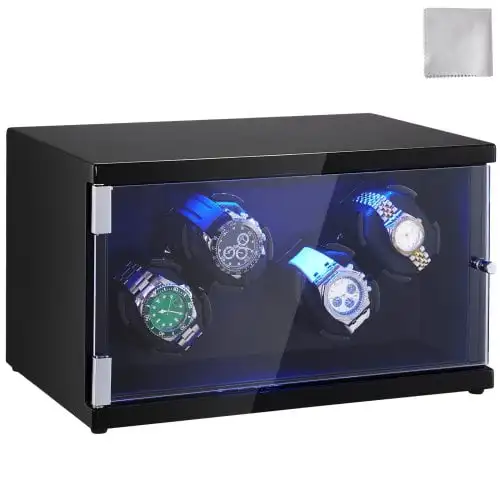
Quartz Watch Storage: Battery Considerations and Care
Quartz watches require different storage preparation than their mechanical counterparts, with battery management being the primary concern. For any quartz watch entering long-term storage, battery removal is strongly recommended for these reasons:
- Batteries can leak chemicals that irreparably damage movements
- Even premium batteries gradually discharge and can corrode
- A leaking battery can destroy a watch’s internal components
- Battery removal eliminates this risk entirely
To safely remove batteries before storage:
1. Open the case back using appropriate tools (case knife, precision screwdriver)
2. Note the battery position and orientation (take a photo if needed)
3. Carefully lift out the battery without touching movement components
4. Check for any corrosion or residue in the battery compartment
5. Leave the case back loosely in place or secured very gently
When removing batteries, inspect the battery compartment for any signs of previous leakage or corrosion. Even minor residue should be professionally cleaned before storage.
For solar-powered or kinetic quartz watches, different considerations apply:
* Solar watches should receive some light exposure every few months
* Kinetic watches benefit from occasional movement to maintain charge
* Consider a partial charge rather than full for extended storage
* Store with dials exposed to occasional ambient (not direct) light
Understanding how often a watch winder should rotate applies to understanding maintenance cycles for all watches, even though quartz watches don’t use traditional winders.
Special Materials: Unique Storage Requirements by Watch Component
Different watch materials require specific storage considerations to preserve their condition over time:
Leather straps:
* Store unbuckled to prevent permanent creasing
* Apply leather conditioner before extended storage
* Keep away from direct contact with other watch components
* Most vulnerable to humidity damage and mold growth
* Consider silica gel packets nearby to absorb moisture
Rubber/silicone straps:
* Clean thoroughly to remove skin oils before storage
* Store without tight bends or folds
* Keep away from other watches to prevent color transfer
* Avoid contact with leather straps (oils can transfer)
Metal considerations:
* Gold requires protection from scratches but resists corrosion
* Steel benefits from anti-moisture environments
* Silver is highly susceptible to tarnish and benefits from anti-tarnish strips
* Titanium is corrosion-resistant but scratches easily
Crystal materials:
* Acrylic crystals can cloud from certain chemicals—avoid contact with solvents
* Mineral glass is scratch-resistant but can shatter if dropped
* Sapphire is extremely scratch-resistant but benefits from protection against impacts
Case finishes:
* Polished surfaces show scratches more readily and benefit from individual storage
* PVD and DLC coatings can chip if watches knock against each other
* Brushed finishes can be altered by contact with polishing cloths
The techniques used to protect watches when traveling can also be applied to storage scenarios, as many of the protective measures serve both purposes effectively.
Security and Documentation Management for Stored Collections
Protecting valuable timepieces goes beyond physical care to include security and proper documentation management:
Security considerations:
* Home safes should be both fire-rated and water-resistant
* Consider safes with humidity control features specifically for watches
* Bolt safes to structural elements of your home when possible
* For very valuable collections, bank safety deposit boxes offer maximum security
* Alarm systems should cover areas where watches are stored
Documentation organization:
* Create a detailed inventory with serial numbers and distinguishing features
* Store original boxes and papers separately from watches when possible
* Keep digital and physical copies of warranties, certificates, and receipts
* Photograph watches from multiple angles before storage
* Record service history for each timepiece
Insurance considerations:
* Standard homeowner’s insurance often has low limits for watches
* Specialized watch insurance offers better protection
* Insurance may require proof of secure storage
* Document appraisals should be updated every few years
* Some policies require specific storage conditions
When organizing documentation, create a system that links each watch to its papers, history, and service records. This organization becomes increasingly important as collections grow and years pass.
For collections with significant value, consider storing the watches themselves in luxury watch boxes within a secure safe, while keeping documentation in a separate fire-proof location to prevent total loss in case of disasters.
Maintenance Schedule: Periodic Checks for Stored Timepieces
Even watches in long-term storage benefit from regular attention. Establishing a maintenance schedule helps identify potential problems before they become serious:
Recommended inspection frequency:
* Every 3 months for watches in standard home storage
* Every 6 months for watches in controlled environments (safes with humidity control)
* More frequently during seasonal changes when humidity fluctuates
* Immediately after any extreme weather events or home climate control failures
Inspection checklist:
* Check for any condensation under the crystal
* Look for early signs of corrosion on cases or bracelets
* Inspect leather straps for mold or dryness
* Verify that storage environments maintain proper humidity levels
* Ensure watch winders (if used) are functioning correctly
* Check quartz watches for any battery leakage signs
* Test basic functionality (winding, setting) without fully operating complications
Maintenance during checks:
* Gently wind mechanical watches several times
* Rotate watch positions within storage boxes
* Air out leather straps briefly
* Adjust humidity control measures seasonally
* Reset perpetual calendars if needed (or note which will need attention)
Creating a rotation system where watches are periodically worn or at least handled helps distribute lubricants and allows you to catch issues early. Even wearing each watch for a single day every few months can significantly benefit its mechanical health.
Luxury Watch Boxes, Men's Watch Boxes, Single Watch Box
Price range: $903.35 through $980.97 Select options This product has multiple variants. The options may be chosen on the product pageSingle Watch Travel Case, Watch and Jewelry Box, Watch Roll Travel Case
Price range: $93.44 through $140.65 Select options This product has multiple variants. The options may be chosen on the product pageAutomatic Watch Winder, Luxury Watch Winder, Single Watch Box
$307.39 Select options This product has multiple variants. The options may be chosen on the product pageLuxury Watch Boxes, Luxury Watch Travel Case
Price range: $200.33 through $224.57 Select options This product has multiple variants. The options may be chosen on the product pageLeather Watch Travel Case, Men's Watch Travel Case, Watch Roll Travel Case
Price range: $91.37 through $92.63 Select options This product has multiple variants. The options may be chosen on the product page4 Watch Winder, 6 Watch Box, Automatic Watch Winder
$512.31 Select options This product has multiple variants. The options may be chosen on the product page
Common Long-Term Storage Mistakes to Avoid
Even well-intentioned collectors often make mistakes that can damage watches during extended storage:
Using presentation boxes for long-term storage
* Problem: Manufacturer’s presentation boxes aren’t designed for long-term storage
* Impact: Often trap moisture and contain materials that degrade over time
* Solution: Use purpose-built watch boxes with proper materials and ventilation
Storing watches in contact with each other
* Problem: Metal bracelets and case backs can scratch neighboring watches
* Impact: Permanent damage to finishes and crystals
* Solution: Use storage with individual compartments and cushions
Ignoring humidity control
* Problem: Ambient humidity changes seasonally and daily
* Impact: Corrosion, mold growth, and degraded gaskets
* Solution: Use humidity monitors and moisture-absorbing products
Leaving leather straps buckled
* Problem: Creates permanent creases and stress points
* Impact: Shortened strap life and permanent deformation
* Solution: Store with straps flat and unbuckled
Neglecting seasonal changes
* Problem: Storage conditions that work in winter may fail in summer
* Impact: Condensation during temperature transitions
* Solution: Adjust storage approach seasonally and monitor during changes
Improper mechanical watch winding
* Problem: Either never winding or leaving fully wound for years
* Impact: Dried lubricants or excess mainspring tension
* Solution: Follow a scheduled winding protocol or proper winder settings
Positioning watches improperly
* Problem: Crowns under pressure or movements in strained positions
* Impact: Crown damage or excessive wear on specific pivot points
* Solution: Position watches face-up with crowns free from pressure
Understanding the differences between watch boxes versus watch rolls helps collectors choose the right storage solution that prevents these common mistakes.
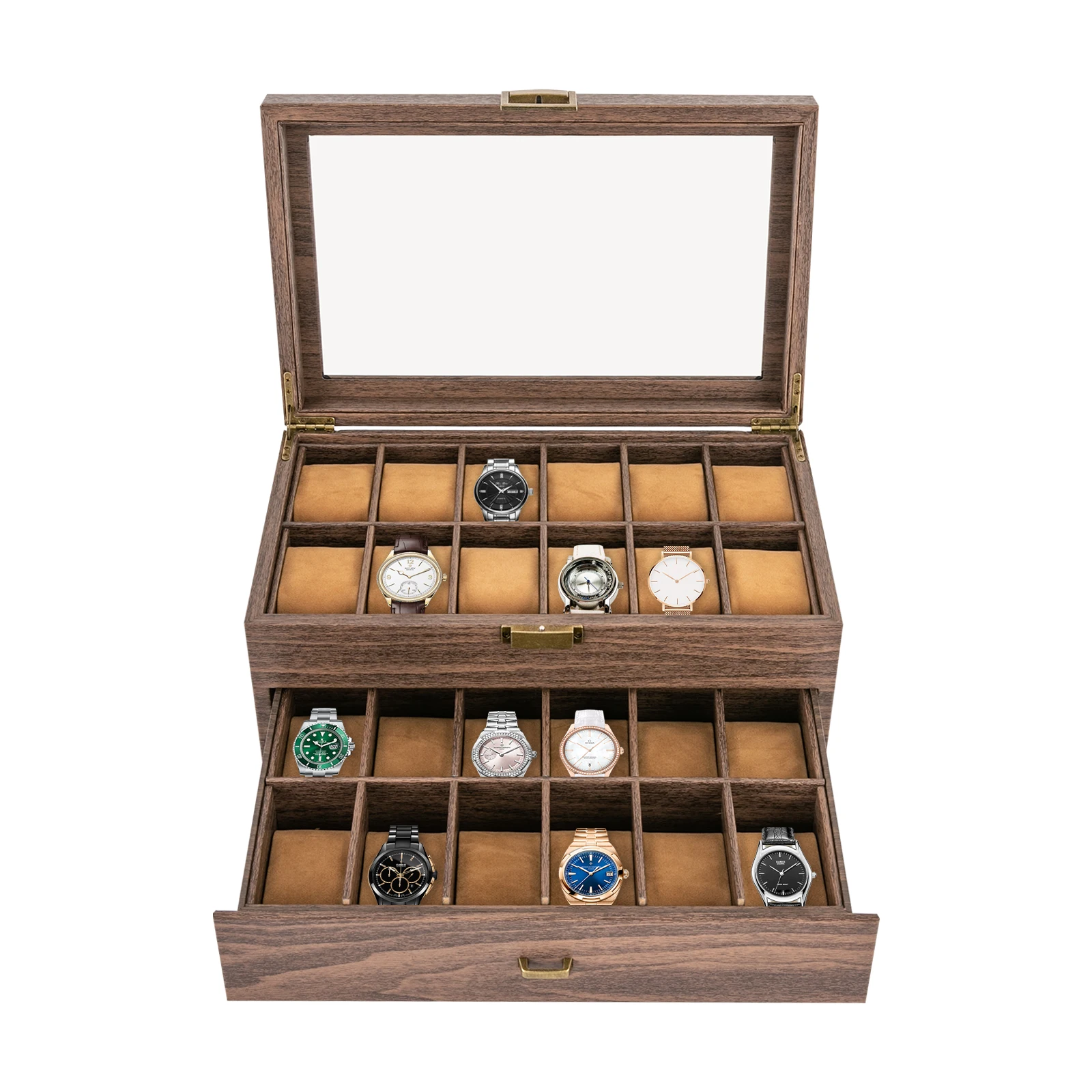
How Does Storage Impact Different Watch Brands?
Storage requirements can vary subtly depending on watch brand, age, and complexity:
Luxury vs. standard watches:
* Premium watches often have more complex movements requiring more careful storage
* Higher-grade materials may be more resistant to environmental damage
* Valuable pieces justify greater investment in storage solutions
* Prestigious brands may offer specific storage recommendations
Vintage considerations:
* Older watches typically have less effective water resistance
* Vintage gaskets are more susceptible to degradation
* Original dial materials may be more sensitive to humidity
* Historic pieces may require more stable environments
Brand-specific factors:
* Watches with unusual complications (moon phases, perpetual calendars) benefit from periodic operation
* Watches with integrated chronographs should generally be stored with chronograph disengaged
* Dive watches with rotating bezels benefit from occasional rotation during storage
* Annual calendar watches may require different attention than perpetual calendars
Movement complexity:
* Simple three-hand movements are generally more resilient in storage
* Complicated movements with multiple functions benefit from occasional operation
* High-beat movements (36,000 vph) may have different lubricant requirements
* Watches with silicon components may be less affected by magnetism during storage
For collections containing multiple types of watches, watch travel cases can provide excellent interim storage solutions when arranging watches by their specific maintenance needs.
Should You Use Watch Winders for Long-Term Storage?
The debate about using watch winders for long-term storage divides even experienced collectors:
Potential benefits:
* Keeps lubricants distributed throughout the movement
* Maintains complicated functions like perpetual calendars
* Eliminates need for resetting when returning to regular wear
* Convenient for watches you might wear occasionally
Potential drawbacks:
* Continuous operation causes gradual wear on movement parts
* Constant tension on the mainspring may affect its performance over time
* Requires consistent power supply and occasional maintenance
* Quality winders represent a significant additional investment
When choosing a winder for long-term storage, consider these features:
* Programmable rotation settings (turns per day)
* Direction control (clockwise, counterclockwise, or alternating)
* Timer functions to provide rest periods
* Silent operation motors
* Individual control for multiple watches
Most experts recommend these settings for long-term storage:
* Fewer rotations than for daily wear (typically 650-800 TPD versus 800-1000)
* Include rest periods in the rotation cycle
* Set rotation direction according to the specific movement
* Position watches properly on the winder pillows
For collectors with large collections, a hybrid approach often works well—using winders for complicated pieces while storing simpler watches statically. This balanced approach recognizes that luxury watch storage setups may include both winders and traditional storage boxes.
Travel Considerations: Storing Watches While Away
Extended travel presents unique watch storage challenges, particularly when your collection will be unattended for prolonged periods:
Before departure preparation:
* Ensure watches are clean and properly positioned
* Consider winding mechanical watches fully before departure
* Remove batteries from quartz watches if trip exceeds several months
* Increase security measures for the storage location
* Document the condition of each watch before leaving
Environmental controls during absence:
* Set climate control systems to maintain consistent temperatures
* Consider humidity control devices that don’t require monitoring
* Avoid scheduling system maintenance during your absence
* Place watches away from windows where seasonal sun exposure changes
Security while away:
* Avoid posting travel plans on social media
* Consider a trusted person to periodically check the collection
* Ensure home security systems are functioning properly
* Consider moving extremely valuable pieces to bank storage
* Verify insurance coverage for extended absence periods
Travel-specific storage options:
* Watch travel cases with extra padding provide additional protection
* Multi-layer storage systems better isolate watches from environmental changes
* Consider temporary relocation of valuable pieces if traveling during extreme seasons
* Provide written instructions for anyone checking on your collection
For collectors frequently traveling, investing in travel roll cases offers versatile protection that works for both travel and temporary home storage situations.
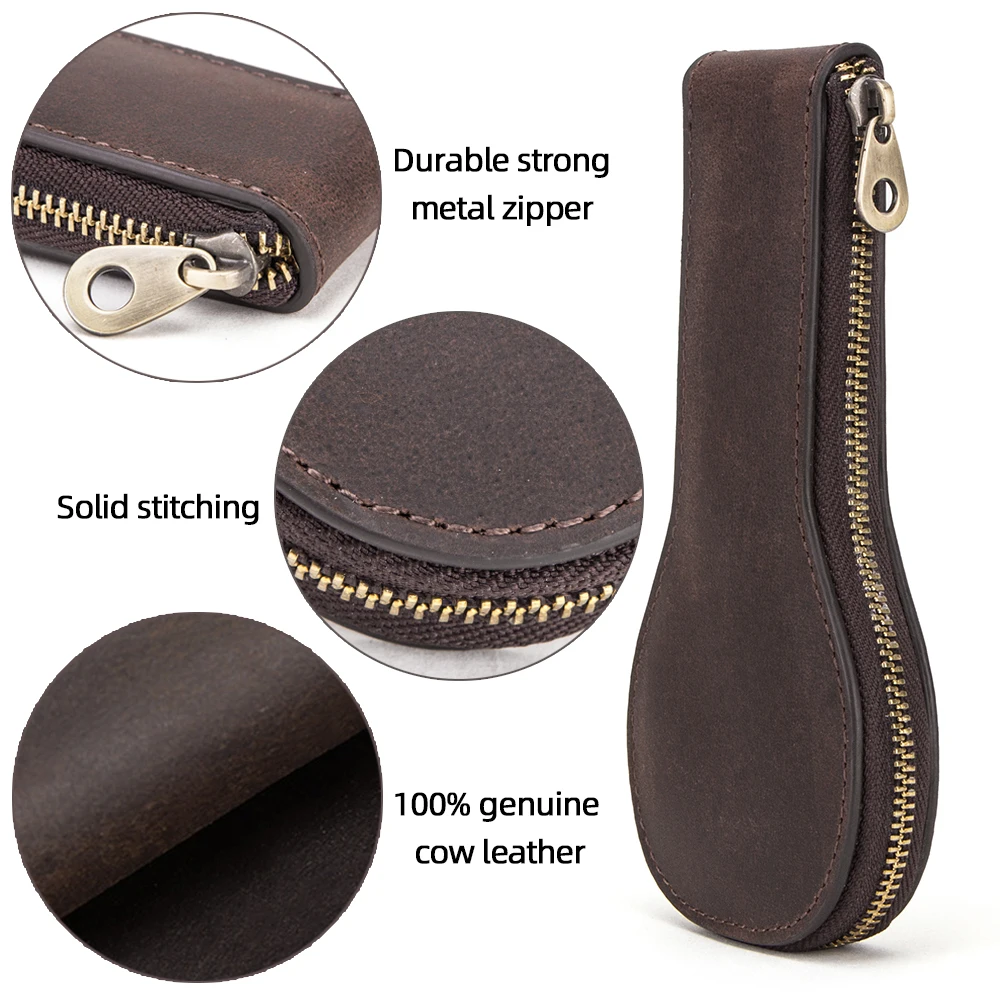
Is Professional Storage Worth Considering?
For certain collectors, professional watch storage services provide an alternative to home storage solutions:
Advantages of professional storage:
* Climate-controlled environments with 24/7 monitoring
* Advanced security systems and insurance options
* Regular professional inspection of timepieces
* Freedom from maintaining storage conditions yourself
* Often includes winding services for mechanical watches
Potential drawbacks:
* Recurring costs can be significant
* Limited access to your collection
* Requires trusting third parties with valuable items
* May include unwanted services in packaged pricing
* Transportation risks when moving watches to and from facility
When professional storage makes sense:
* For extremely valuable collections
* During extended travel or relocation
* If your home environment is challenging (extreme climate)
* For collectors without adequate home security
* When insurance requirements mandate professional storage
Questions to ask potential storage providers:
* Security measures and access protocols
* Environmental control specifications and monitoring
* Handling procedures and staff qualifications
* Insurance coverage details and limitations
* Inspection and maintenance services included
* Emergency protocols for power outages or system failures
Professional services typically provide detailed condition reports and regular updates, which help monitor your collection’s status without requiring physical access.
What to Do When Taking Watches Out of Long-Term Storage
Returning watches to regular use after extended storage requires careful attention to ensure they transition safely to active wear:
Initial inspection process:
1. Examine for any signs of damage, corrosion, or deterioration
2. Check for moisture under the crystal
3. Inspect leather or rubber straps for cracks or stiffness
4. Verify crown operation and smooth winding
Acclimation period:
* Allow watches to gradually adjust to room temperature if stored in cooler conditions
* Avoid sudden temperature changes that could cause condensation
* Give leather straps time to flex naturally before wearing
Mechanical watch restart:
* Wind slowly and gently at first
* Listen for any unusual sounds during winding
* Set time by moving hands clockwise when possible
* Avoid setting complications until basic functions verify proper operation
Quartz watch preparation:
* Install fresh batteries
* Clean battery contacts if necessary
* Test all functions before regular wear
* Reset time and date functions
When service might be needed:
* If winding feels gritty or uneven
* If the watch stops prematurely after winding
* If there’s visible moisture or condensation
* If functions operate erratically
* If it’s been over 5 years since the last service
Taking these steps ensures your watches return to regular use safely after extended storage. For watches showing any concerning signs, professional inspection is recommended before resuming normal wear.
Final Thoughts: Creating a Storage System That Grows With Your Collection
As watch collections evolve, storage systems must adapt to accommodate new pieces while maintaining protection for existing timepieces:
Scalable storage strategies:
* Choose modular systems that allow expansion
* Establish consistent storage standards across different containers
* Create zones for different types of watches (daily wear, special occasion, vintage)
* Implement tracking systems that grow with your collection
Balancing display and protection:
* Consider rotating display pieces quarterly
* Create a system where displayed watches receive regular attention
* Use UV-protected display cases for watches you want visible
* Reserve traditional storage for pieces worn less frequently
Documentation evolution:
* Maintain digital records that can be easily updated
* Create consistent recording processes for new acquisitions
* Document storage conditions alongside watch details
* Track maintenance schedules for all pieces regardless of storage method
The effort invested in proper watch storage pays dividends through preserved functionality, appearance, and value. Well-stored timepieces not only maintain their technical performance but retain the qualities that make them potential heirlooms.
The most successful long-term storage approaches balance protection with practicality, creating systems that encourage regular interaction with your collection while ensuring each piece remains in optimal condition when not being worn.
By implementing thoughtful storage practices, your watches will remain ready to tell not just the time, but also their stories for generations to come.

